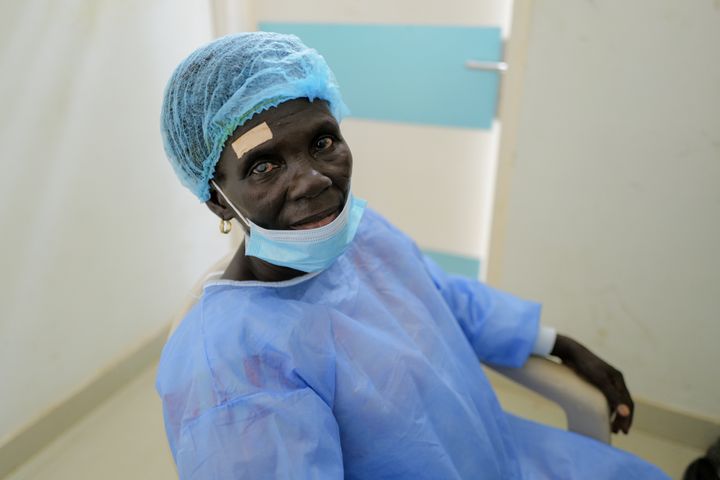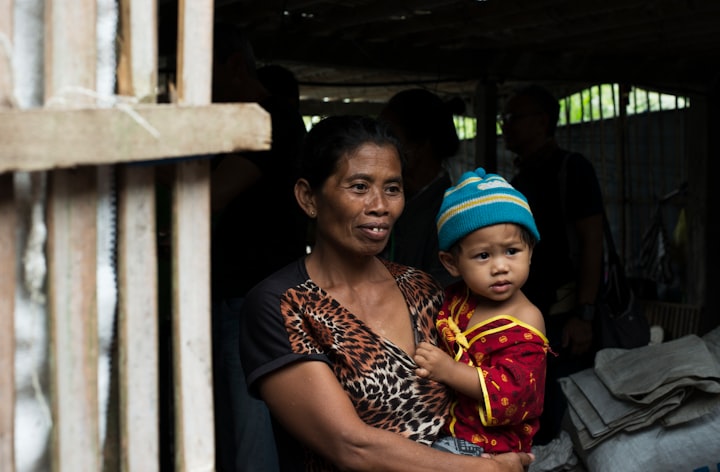We Must Not Close Our Eyes To Those Who Cannot See

Two years ago Parthasarathi Mocherla read an advertisement in his local newspaper in Hyderabad, India, inviting local people to attend a public meeting. A week later he attended to learn about the urgent need for more people to donate their cornea. “He took a donor card immediately,” says his wife Varalakshmi, “and since then he always encouraged everyone else to do the same”.
Little did they know that Parthasarathi would soon be diagnosed with a heart problem. “He lived very carefully because of it,” says Varalakshmi, “but soon we had to admit him into hospital for treatment”. Parthasarathi passed away 15 days later.

At the same time, a young couple more than 1,000km miles away in Maharashtra had been wrestling with a different health challenge. Their baby daughter Fatima had developed white spots in her eyes that were degrading her vision. Fatima’s father is a daily wage labourer and the couple worried about how to pay for the cost of seeking treatment.
“We were stressed for three months when we discovered that our new baby had this problem,” says new mother Ishrat Anjum, “I feared what will other kids say when she plays with them? How will she get marriage proposals when she is older?”.
These are the kind of stories that my not-for-profit Tej Kohli Foundation encounters daily. In the case of baby Fatija, Dr Muralidhar, a member of the Tej Kohli Cornea Institute faculty at LV Prasad in Hyderabad, performed corneal transplantation to fix her eyesight using cornea harvested from donors like Parthasarathi that were stored in an eye bank.

As the challenges of a post-COVID world continue to mount, there is a popular sentiment that the UK should retrench from its position as the world’s third-largest bilateral donor of foreign aid. In 2019 foreign aid spending by the UK was $18.7 billion — which is barely enough to fund the furlough scheme for more than a month and a half. But the truth is that we need to get smarter with aid spending. Efficacy is about more than just giving money.
Worldwide 39 million people suffer from blindness. 90% of them live in the world’s poorest communities and 12 million of them live in India. Detractors like to point out that India has a space program. But that does not change the fact that 6.8 million people in India have blindness which is a direct consequence of corneal disease — most of which can be cured.
When it comes to poverty-driven corneal blindness, when one life ends, two other lives can be greatly improved when sustainable eye bank infrastructure and systems are in place. But building these systems in poorer countries is a substantial undertaking.
“We counsel that it is mostly the young that suffer from corneal blindness. Once those potential donors know they can help others to live a complete life, most choose to donate” says Raghu, an eye donation counsellor for the Ramayamma Eye Bank in Hyderabad. “When we started in 1989, we were told that we would not succeed because organ donation doesn’t work in India,” says manager Mr Harihara. But today Ramayamma is a success: it is the largest eye bank in Asia and one of the largest in the world.

NGO’s — some funded by international aid — play a role in creating this type of success. Not-for-profit organisations such as my Tej Kohli Foundation also manage partnerships with a national network of hospitals in India. They are notified when a death occurs at a hospital, and trained volunteer counsellors quickly attend to engage with the family and, with consent, to recover the cornea. The most successful cornea recovery programs have their counsellors posted at key hospital sites 24 hours a day seven days a week.
The value of building this kind of infrastructure is evident. Studies have shown that the economic return from $1 invested in building sustainable eye care systems to combat poverty-driven blindness is $3.56 in Kenya, $3.16 in poor regions of China and $6 in Pakistan. These figures do not include the social return: without treatment, children like Fatima would face a lifetime of being disenfranchised from education and life events.
To retrench from providing aid to developing countries would be an expedient reaction amidst the fallout from a global pandemic. We must instead be smarter about how and where aid is spent. Building vital eye care infrastructure in the poorest countries that need it most is one of the ways that we can combat poverty and the disenfranchisement of women. And there are similar opportunities across a full spectrum of global health challenges.

Given the right information and with infrastructure in place, there is no shortage of kindness and willingness from individuals within poorer countries to contribute too: “Losing Parthasarathi caused incomparable grief” says Varalakshmi, “but the fact that our loved ones can still live on, in a way, made me immensely happy. That we can remove a healthy cornea and implant it in another person so that they can see in the world is a miracle.”
For more information on Tej Kohli as a philanthropist visit tejkohliruit.com and to read more of his views go to his Medium.
To read about Tej Kohli as an investor visit Kohli Ventures.
Find out more about Tej Kohli: Tej Kohli the technologist investing in human triumph, Tej Kohli the philanthropist trying to cure the developing world of cataracts and Tej Kohli the London tycoon with a generous streak.
| Follow: Twitter | Instagram | LinkedIn | Facebook | YouTube |




Comments ()